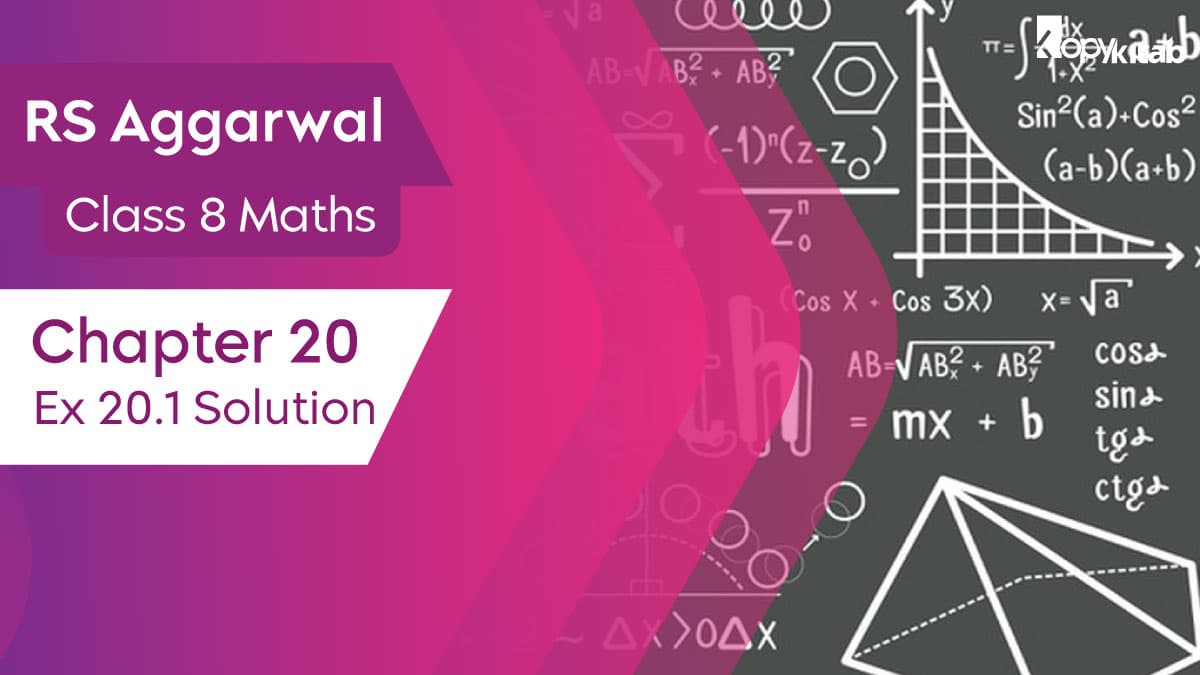
RS Aggarwal Class 8 Maths Chapter 20 Ex 20.1 Solutions: In this exercise, the students will learn the calculation of volume, total surface area, and missing height, breadth, and width of a cube and cuboid. These solutions provide a detailed answer to all the questions available in the RS Aggarwal textbook. Cube & cuboid are three-dimensional shapes that comprise 6 faces, 8 vertices, and 12 edges.
The main difference between them is a cube has all its sides equal whereas the length, width, and height of a cuboid are different. The shape of the cube & cuboid looks almost similar but has different properties. These solutions help the students by providing them the detailed answers with examples after each question. These solutions also assist the students to have a proficient studying pattern with which they can secure higher marks in the Maths exam.
Access RS Aggarwal Class 8 Maths Chapter 20 Solutions PDF
Download RS Aggarwal Class 8 Maths Chapter 20 Ex 20.1 Solutions
RS Aggarwal Class 8 Maths Chapter 20 Ex 20.1 Solutions
Important Definition for RS Aggarwal Class 8 Maths Chapter 20 Ex 20.1 Solutions
- Cube
It is a 3D figure that is defined as the XYZ plane. It has 6 faces, 8 vertices, and 12 edges. All the faces of the cube are in square shape and have equal dimensions.
- Cuboid:
It is also a polyhedron having 6 faces, 8 vertices, and 12 edges. The faces of the cuboid are parallel. But not all the faces of a cuboid are equal in dimensions.
- Formulas of Cube and Cuboid
Cube
Total Surface Area = 6(side)2
Lateral Surface Area = 4 (Side)2
Volume of cube = (Side)3
Diagonal of a cube = √3l
Perimeter of cube = 12 x side
Cuboid
Total Surface area = 2 (Length x Breadth + breadth x height + Length x height)
Lateral Surface area = 2 height (length + breadth)
Volume of the cuboid = (length × breadth × height)
Diagonal of the cuboid = √( l2 + b2 + h2)
Perimeter of cuboid = 4 (length + breadth + height)
- Surface Area of Cube and Cuboid
The surface area of a cuboid is equal to the sum of the areas of its 6 rectangular faces.
Assume a cuboid having the length to be ‘l’ cm, breadth be ‘b’ cm & height be ‘h’ cm.
Area of face EFGH = Area of Face ABCD = (l × b) cm2
Area of face BFGC = Area of face AEHD = (b × h) cm2
Area of face DHGC = Area of face ABFE = (l × h) cm2
Total surface area of a cuboid = Sum of the areas of all its 6 rectangular faces
Total Surface Area of Cuboid= 2(lb + bh + lh)
- Volume of the Cube and Cuboid
Volume of Cuboid: It is equal to the product of the area of one surface and height.
Volume of the cuboid = (length × breadth × height) cubic units
Volume of the Cube: It is equal to the product of the area of the cube and height.
Volume of the cube = l2 × h but l = h
Thus, Volume of the cube = l2 × l
Volume of the cube = l3
Know more at the official website.
